How to connect an old computer to Wi-Fi. WiFi receivers and everything about them
Wi-Fi technology allows you to quickly and easily connect all your home devices to the network and give them access to the Internet without laying wires. To set up a connection, you only need a router, for stationary computer- optional Wi-Fi adapter. Let's figure out how to connect Wi-Fi on a laptop and PC.
The router or router receives the incoming signal over the cable and transmits it to wireless devices within range. For the initial setup, connect the router to the computer with a wire. Next, you need the parameters specified in the router documentation or on a sticker on its back side: IP address, administrator login and password. Open the browser and enter the IP numbers in the address bar, the router's web panel will open - log in with the administrator password.

How to connect and configure a Wi-Fi router: in the panel, write down the parameters for wireless networks indicated on the website of your provider. Come up with a name for the network - you will use it to select it in order to connect. In the security settings, create a password to secure the connection. Neighbors within the router's coverage area can use your channel without a password. To complete the configuration, reboot the router by selecting the Reboot function in the panel, disconnect the device from the computer.
Turn on Wi-Fi on a laptop
In modern laptops, the Wi-Fi adapter is most often built into the original configuration. If you do not know if there is one, look for the icon on the case in the form of an antenna or information in the documentation.
How to connect a laptop to any Wi-Fi: you just need to activate the wireless module. To do this, press the key combination Fn and function key with antenna icon. On an Asus laptop, this is Fn + F2. You can also activate the connection in the Windows settings - in the subsection "Network Control Center ..." enable the wireless connection.
We put the Wi-Fi adapter on the computer
To use Wi-Fi on your computer, you need an adapter that will receive signals from the router. They are external - small, inserted into a USB port, and internal - in the form of a small card that is placed in the PCI slot of the motherboard.
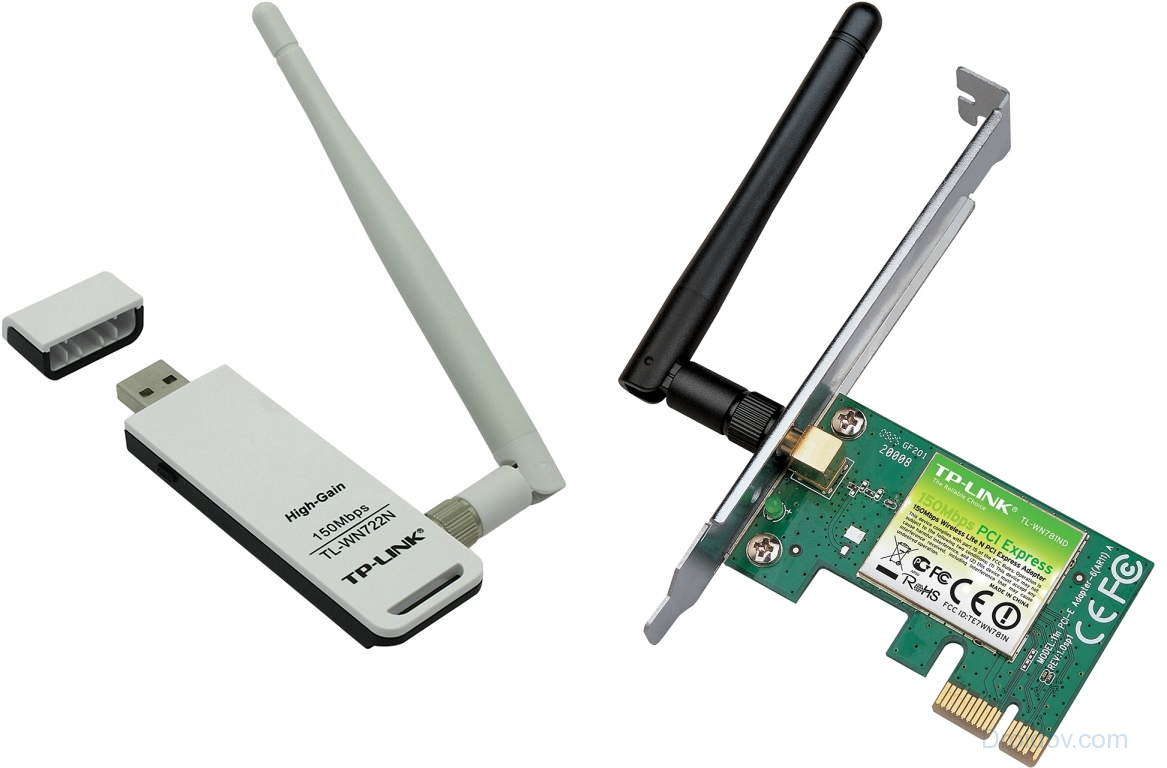
Before connecting the Wi-Fi router to the computer, connect the adapter. Be sure to install the drivers on the devices - from the enclosed disk or downloaded from the manufacturer's website on the Internet. For some adapter models, a proprietary configuration utility will be installed along with the driver.
Setting up the connection
To connect wifi to a computer, it remains to establish a connection. For a Windows 7 computer, open the "Network and Sharing Center" of the "Start" menu. Go to adapter options and enable wireless connection- the Wi-Fi bar icon will appear in the tray. Click on it and select your network by the name specified in the router. Enter the password and connect immediately.

Hello, friends. Wireless technology made Internet access more comfortable. You can freely move around the house with a laptop and browse websites, or watch videos on a smartphone by connecting to access points in parks, cafes, train stations. But for stationary PCs, there are some limitations in this regard.
I propose to consider the best wifi adapters that will allow you to connect your computer to a network without wires.
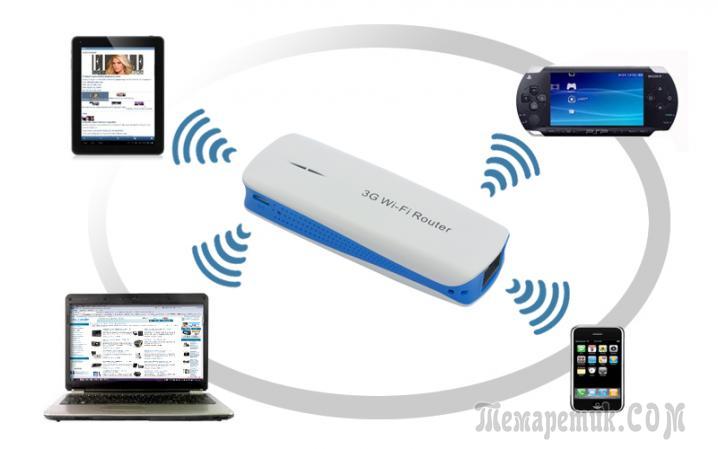
What is this device?
A modern Wi-Fi adapter allows not only receiving a signal, but also transmitting it. That is, system unit you can turn it into a hotspot, distribute the Internet from it to other devices, implement a network.
Varieties
- USB adapters. The most common option. Outwardly, it resembles a USB flash drive that is inserted into the corresponding port of the computer. Can be easily detached, carried and connected on other PCs.
- PCI-E devices. They look like a board that is integrated into the chipset. This stationary solution is not as versatile, but provides better performance. To install it, you will have to disassemble the system unit (remove the side cover). The whole process will take no more than five minutes.
- With PCMCIA interface. Such "hardware" looks like a card that is inserted into the slot of the same name. Today they are rarely used. Many manufacturers no longer produce such models, but they are still on sale.
The first and third options are also suitable for a laptop that either lacks a Wi-Fi module (in the most ancient laptops), or this module does not work due to a malfunction.
Criterias of choice
The vast majority of modern adapters support the 802.11n data transmission standard, which provides a maximum throughput of no more than 300 Mbit per second. While this is enough for home use or building a network in a small office.
Not so long ago it was developed 802.11ac standard, which has an incredible data transfer rate: from 3 to 10 Gbit per second. The cost of such equipment is quite high, and it makes sense to use it only in large enterprises, universities, research centers and other "serious" institutions.
You should also pay attention to transmission quality(its power), which is measured in dBM. Good signal propagation performance is provided by a transmitter with 20 dBM or more.
A few words about frequency... Despite the fact that in other countries the equipment operates at 5 GHz, we still use 2.4 GHz. When buying an adapter, you should take this point into account and do not overpay extra money for the new standard.
Some devices may have external antenna which increases the coverage radius and signal quality. If the dimensions and appearance such models do not bother you, then you should buy just such an adapter.
Many Chinese sellers on AliExpress offer to buy models with an antenna for a penny. Everything looks beautiful in the picture, but after receiving the goods, you find that the signal level even through one wall in the apartment is very weak. As practice shows, there is no external amplifier in such cases, and the antenna is just a piece of plastic for beauty!
You can safely buy adapters with internal antenna... They are more compact and do an excellent job of transmitting a signal over long distances (provided there are no many obstacles).
Top Models
This list is current for July 2016, but the article will be constantly updated as new information becomes available.
All current adapter models use Atheros or Broadcom wireless modules. The same devices are installed on laptops. You may have noticed these names in the "Device Manager" ("Network Equipment" tab) when you updated the drivers.
Now let's move on to considering interesting options that combine the best price and quality.
Device with PCI-E interface, which works both for reception and transmission. Special software that comes with the adapter allows you to configure the access point for connecting other gadgets (smartphones, laptops, tablets) to the Internet.
You can set up a secure connection using a password (WPA, WPA2, and WEP encryption methods). Equipped with one external antenna. If the room is too large or there are many walls in it, then it is better to opt for the version with two antennas - N15. For a computer, this is the optimal solution - inexpensive and effective.

D-Link DWA-525
The proprietary software allows you to quickly set up a connection, set a password and save several user profiles (this may not be relevant for the home, but it is necessary in an office environment).
- Has one 2 dBi antenna;
- Operates in two frequency modes: 2.4 GHz and 5 GHz;
- Versatile. Can be integrated into any standard slots: from x1 to x16;
- The throughput is 300 Mbit per second.
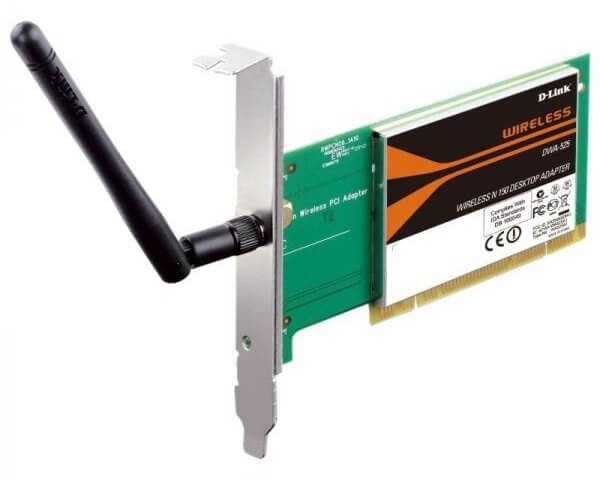
TP-Link TL-WDN3200
Thanks to the dual range, they will avoid interference that comes from household appliances (for example, a microwave oven). The connection speed of 300 Mbit allows you to play modern Online Games, watch the video High Quality... A simple configuration program interface will allow you to quick start even to an inexperienced user.
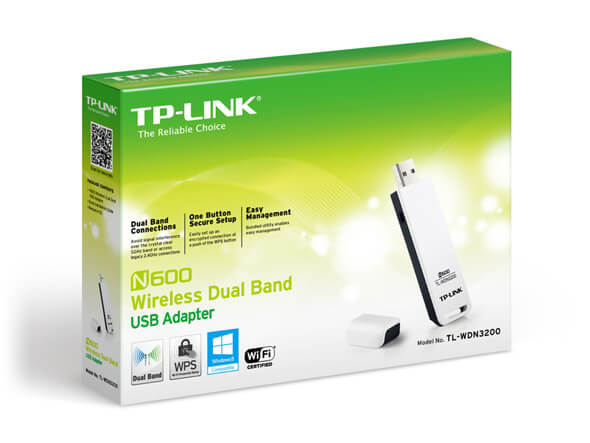
One of the most compact adapters. Despite its tiny dimensions, the device is equipped with a powerful internal dBi antenna and 18 dBm transmitter. Quite an acceptable solution for a small apartment.
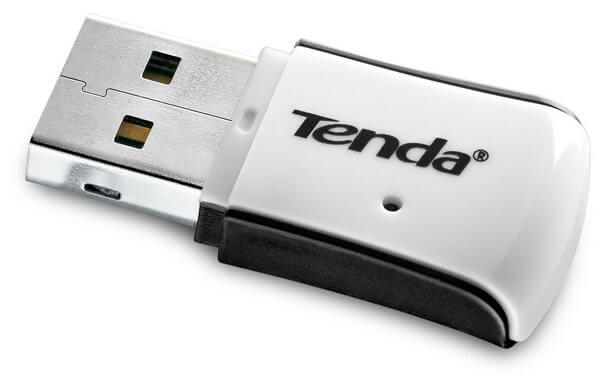
Not the newest, but very popular model with an external antenna. The throughput of 150 Mbit per second is not the lowest indicator that today will satisfy all the needs of Internet users.
I am sure that you will definitely like at least one model from my list. If you already have experience using the above devices, I would like to know your opinion on the quality of operation. I look forward to your comments.
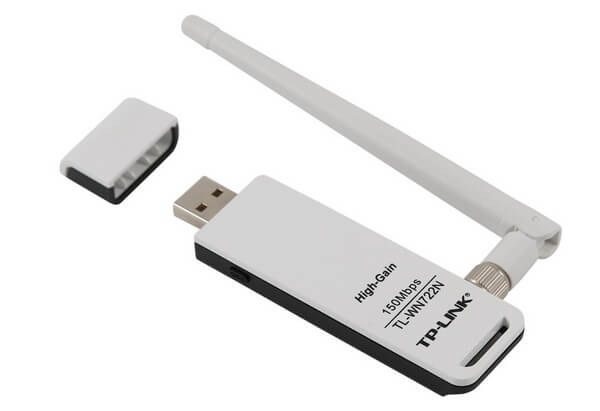
I personally use this adapter on my laptop or on the road. It is so powerful that you can catch a neighbor's Wifi, even across the street. Compatible with both Windows and Linux operating systems. I have been using it for several years and am very pleased with it. So I recommend it.

Finally, I want to give a little advice. Alternatively, you can connect a router to your computer wired via Ethernet. This guarantees a stable signal without loss. But it will only work if wireless router located near the PC.
We have considered the most popular and relevant models from the WiFi line. I hope this material will help you make the right choice. Until next time.
Dual band today WiFi receivers you will not surprise anyone - most of the top-end devices from leading manufacturers of network equipment can operate both at 2.4 GHz and support latest standard wireless communication 802.11 АС with a frequency of 5 gigahertz. However, their cost is sometimes equal to or even higher than many more technically complex routers. When I set out to update my "fleet" of test equipment that would work with all the latest technology WiFi, then the question arose WiFi selection receiver. Of course, I wanted everything to be inexpensive - I chose not by the manufacturer, but by the ratio technical characteristics and cost. The cheapest option turned out to be the top adapter manufactured by TP-Link, model Archer T4U... We will carefully study and test it today.
The Archer T4U WiFi receiver is a small device, slightly larger than a regular flash drive. The body is glossy black without any special frills. An LED is hidden under the transparent glass, signaling the connection to the network.
The manufacturer promises 802.11ac speeds of up to 867 Mbps at 5 GHz and up to 300 Mbps at 2.4 GHz over a wireless connection. In addition, to increase performance, the receiver is equipped with USB port 3.0, which also improves call quality compared to 2.0. Like most TP-Link adapters, Archer T4U also has an access point mode and can distribute the Internet from a computer connected to the same PC via a cable, or received to the same receiver via WiFi.
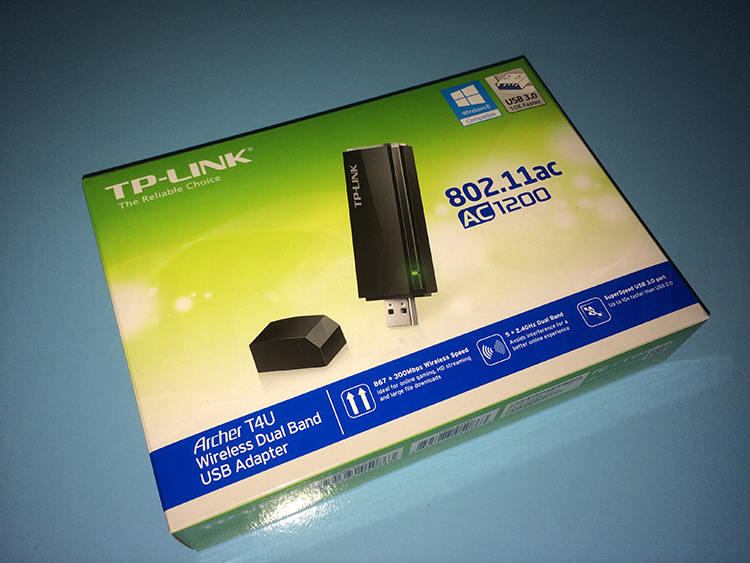
We get out of the box:
- WiFi receiver
- Instructions in Russian and a warranty card
- CD with drivers and proprietary software for configuration
- Additional USB cable 1m for installing the adapter in a place with the best signal reception.
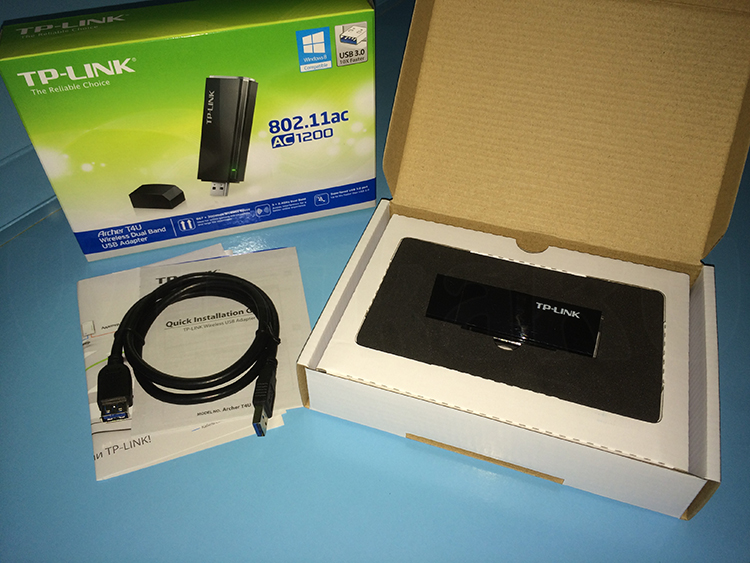
The case also has a WPS button for quick connection to the router without your participation.
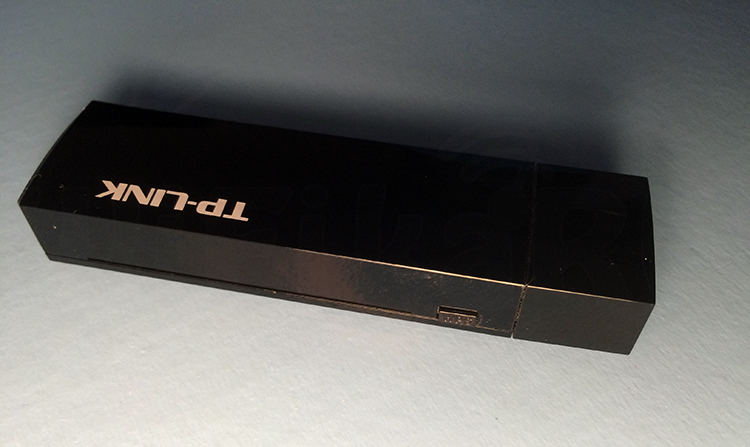
Archer T4U setup
To connect your PC to WiFi internet you need to connect the adapter to a USB 3.0 port - 2.0 will do, but the speed will be lower - how much, we'll check further. We launch the utility from the installation CD and install the firewood and the application for the WiFi receiver on the computer.
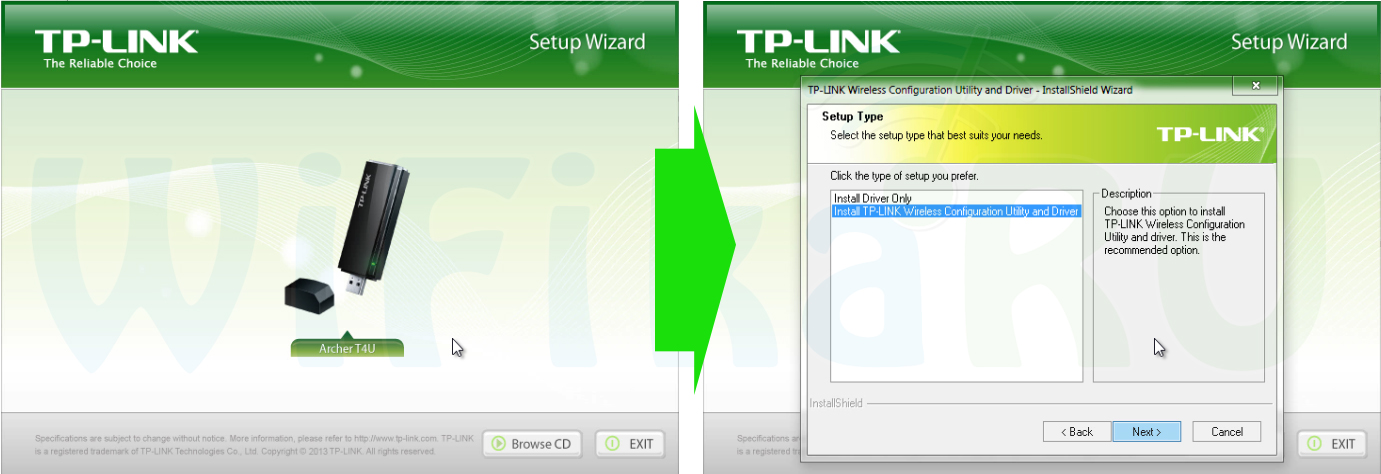
After installing and launching the TP-LINK program, a window will open with a choice of wireless networks for connection - we find our own and connect by entering the password from it.

Archer T4U as an access point
Access point mode is convenient when you need to distribute it to other devices via WiFi, but you do not have a router. In order to do this with the Archer T4U, you first need to allow other devices to use your cable connection, otherwise nothing will work. To do this, go to the network control center in "Changes in adapter parameters"
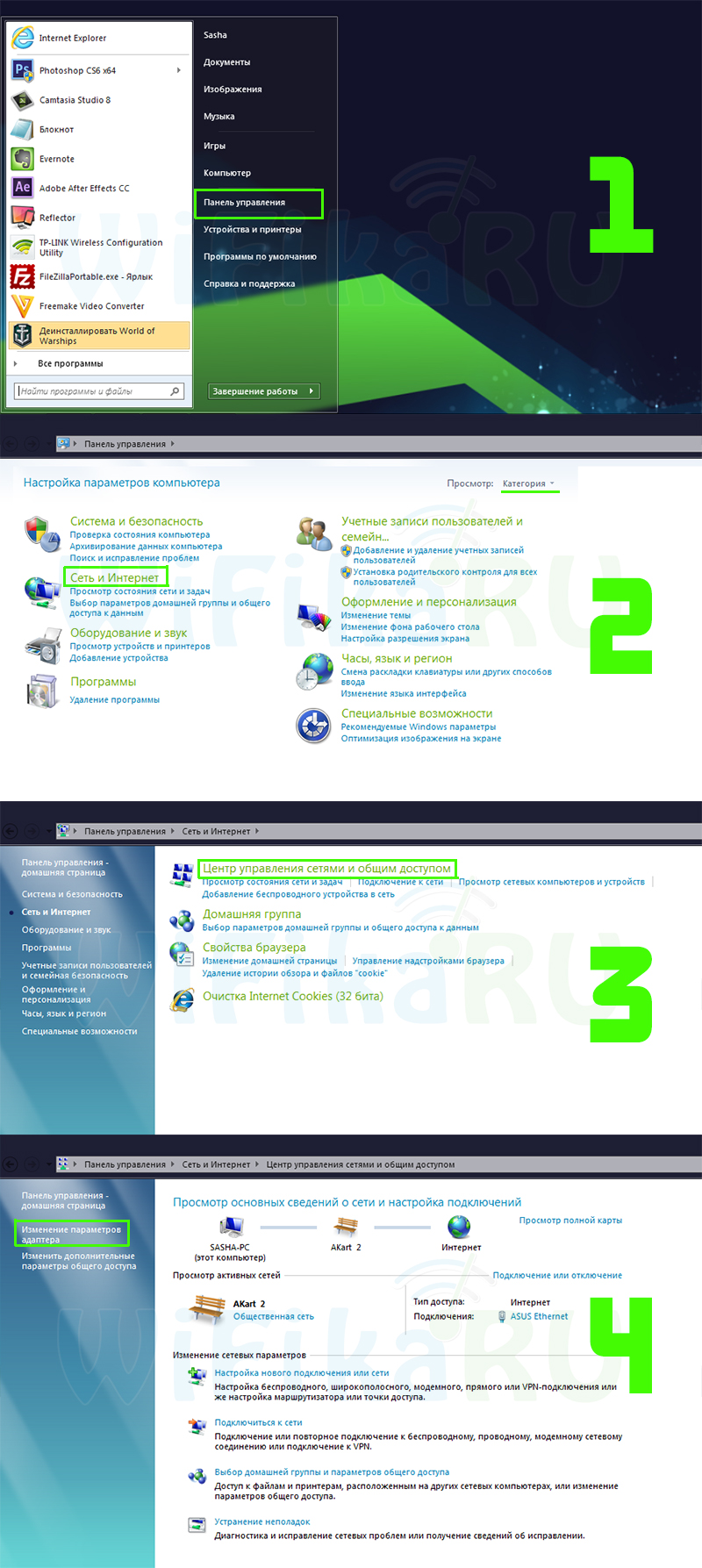
We find that network adapter from which you want to share the Internet - by default, the cable connection is called "Local Area Connection". For convenience, I renamed it after the name of the network card. Click on it right key mouse and go to properties.

Go to the "Access" tab and put two check marks on the available items that allow other users to use this network.

Save and go to the application for the TP-Link receiver. Here, on the "Soft AP" tab, activate the access point - check the "ON" item. As the source of the Internet (Internet Connecting Share), select network card PC. And set the parameters of the new wireless network - name (SSID), encryption type, password.
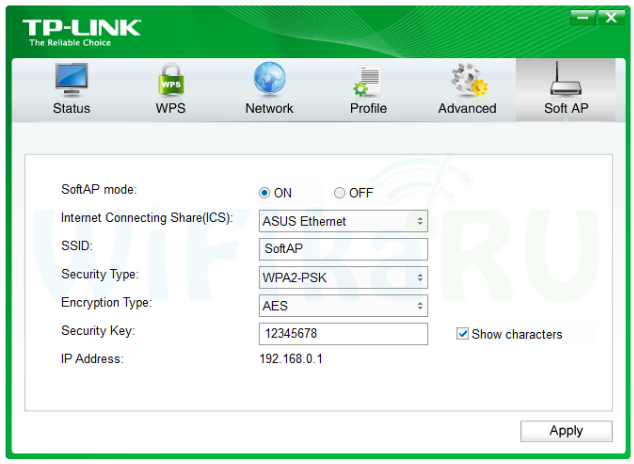
In the event that you want to use the adapter as a signal repeater, that is, simultaneously receive and distribute a WiFi signal, then select "Wireless Connection" as a source (ICS).
TP-Link Receiver Wi-Fi Speed Tests
When measuring the speed, the Archer T4U was frankly pleased. His colleague, the Archer C2 gigabit router acted as a partner, so the test results are close to the maximum possible in real conditions.
1. Internet from the provider directly to the computer via cable (PPPoE, tariff up to 100 Mbps) 
2. Internet via a router when the PC is connected by cable 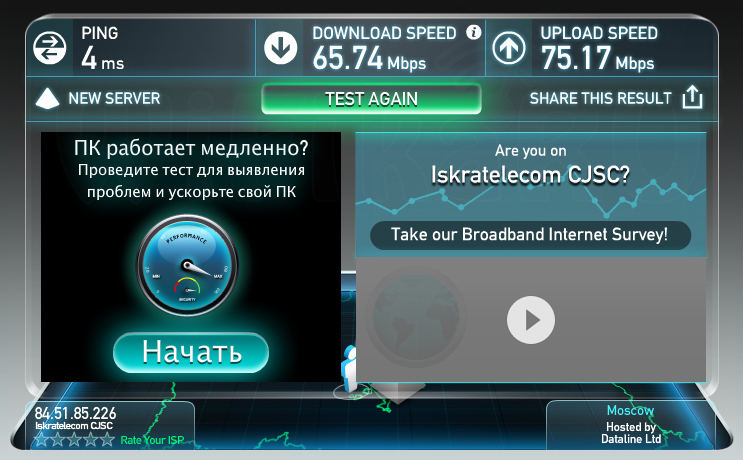
3. Internet over WiFi using Archer T4U receiver at 2.4 GHz 
4. The same, but at 5 GHz 
5. Measurement in a local network between 2 computers. 1 PC is connected to the router via cable, 2 - via WiFi via Archer T4U at 2.4 GHz 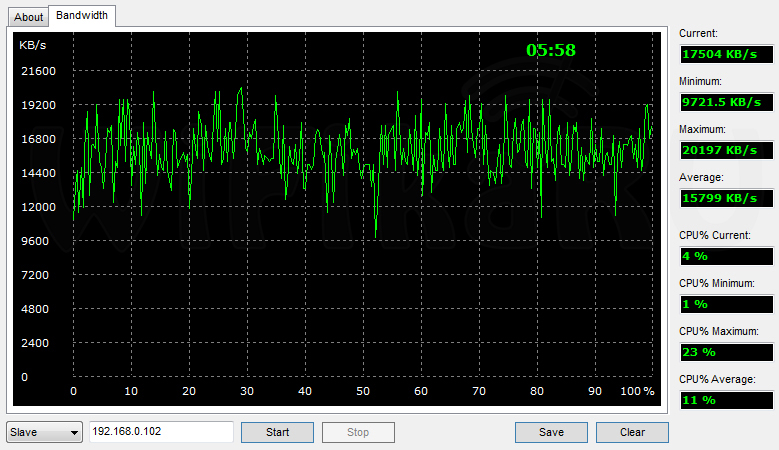
6. The local network... 1 PC via cable, 2 via WiFi at 5 GHz 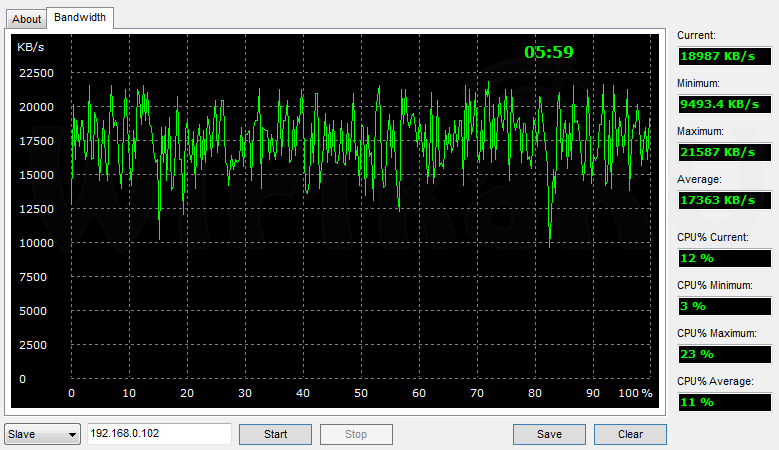
WiFi Receivers have already entered our life so tightly that it is already difficult to imagine it without them. Almost all laptops and smartphones are equipped with such a device. With it, you can easily and easily connect to wireless networks.
Execution
By their design, WiFi receivers are of the following types:
- integrated;
- interior;
- external.
In the first case, it is made in the form of a separate microcircuit and is soldered to the motherboard. Most often, such devices in this design can be found on inexpensive motherboards, smartphones and netbooks.
The second option is internal. Not very common. This is a card that plugs into a PCI expansion slot on motherboard.
In the latter case, such a device is made in a separate case and resembles a flash drive. Such a WiFi receiver is connected to the usual rectangular YUSB connector. The price for each of the options is different. An integrated adapter, for example, does not need to be purchased. It comes with a digital device. But comparing the internal and external, we can conclude that the latter costs much less. Prices for such devices start at 150 rubles. In turn, the cost of internal adapters starts at 400 rubles.
Moreover, their characteristics are identical. Another classification of such devices is based on the standard with which this device can work. wireless adapter... In this case, they are subdivided as follows:
- 802.11a - data transfer rate 54 Mbps, operating frequency 5 GHz.
- 802.11b - in this case, the data transfer rate is up to 11 Mbps with the same frequency, but the range of this wireless network increases to 150 meters in open areas.
- 802.11g - this standard appeared 4 years after the first two in 2003. Its speed is the same as that of "a", and the radius of action is twice that of "b". It is backward compatible with the previous two standards.
- 802.11n is the logical evolution of g. He has both the data transfer speed increased (up to 600 Mbit / s), and the range increased (up to 600 meters).
- The latest standard, 802.11ac, is not yet widely adopted. Its main difference from "n" is the increased data transfer rate, which in this case can reach a phenomenal 10 Gbit / s.
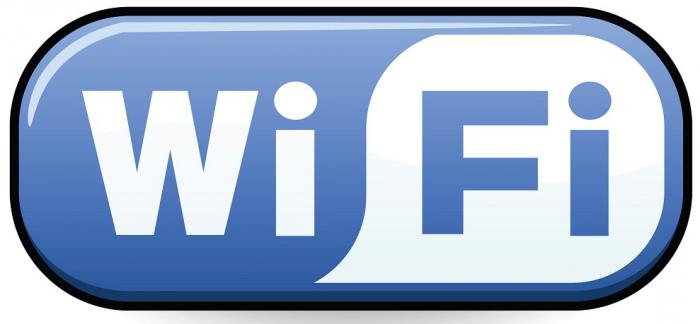
Connection
For an integrated Wi-Fi adapter, this step is skipped. The internal receiver plugs into an expansion slot on the motherboard. To connect it, you need to remove it from the system unit, install it into the white PCI slot. There may be several of them. It is better for these purposes to use the one with the serial number "1" (if it is free). Next, the Wi-Fi adapter board must be fixed with a bolt that is screwed to the case. At the next stage, the computer is assembled and returned to its original state. All the described manipulations need to be done only with the equipment turned on. If you need to connect external WiFi receivers, it is not necessary to turn off your computer or laptop. It is enough to find the required rectangular connector and install the adapter into it. For stationary PCs, it is recommended to use those YUSB sockets that are brought out to the back side and soldered into the motherboard.
Customization
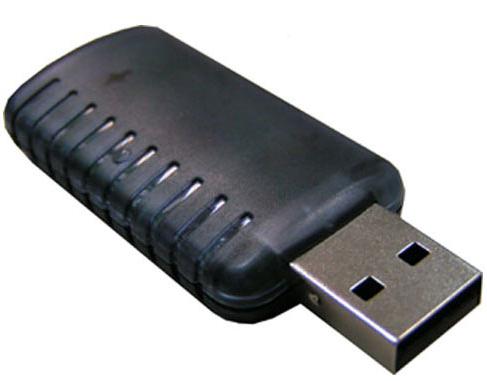
The next step is software for a PC or laptop. First you need to install the drivers. When a new device is connected, it searches for software required for its normal operation. At the end of this operation, a message should appear stating that the equipment is installed and ready for use. But if the required software is not found, then a message will appear stating that operating system I didn’t find him. In this case, you need to manually install it. A CD is included with each adapter. It has the required driver without fail. If the disc is lost, then the necessary information can be downloaded from the manufacturer's official website. Then we launch the installation version of this software and, following the instructions of the wizard, install it on our local computer or laptop. After that, a gray ladder should appear in the lower right corner of the monitor. We click on it with the left mouse button. In the list that opens, we find the wireless network we need and connect to it. If necessary, enter the password to gain access.
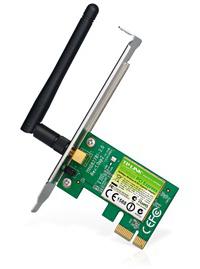
Test
At the final stage, you need to check the performance established connection via WiFi. The receiver for the computer is already properly configured as well. To check, you need to launch any browser that is on your computer (for example, Microsoft Explorer or Opera). Then we enter into it address bar address mail.ru and press "Enter". After that, it should open this portal... Another nuance that you need to pay attention to during the setup process: the operating mode of the router and Wi-Fi transmitter must be the same. For example, if one of them has "b" and the other has "n", then it will be impossible. Though wireless networks in the list available connections will be present.
Conclusion
Within the framework of of this material various modifications of devices such as WiFi receivers have been described. The order of their connection, configuration and testing is also indicated. All this will allow any user to configure such equipment without any problems, regardless of their level of training and knowledge. So feel free to take it and do it. There shouldn't be any problems.
Over the last decade mobile technologies made a sharp leap towards mass. That is why such developments as a Wi-Fi adapter for a computer are trying to be implemented in almost every existing sample.
The idea of transmitting information "over the air" was first voiced in a scientific sense back at the beginning of the twentieth century by Nikola Tesla. But then it was somewhat difficult to implement, and now it is difficult to imagine that someone would refuse to install a Wi-Fi adapter for a PC and would prefer to mess around with laying cables.
If back in the early 2000s, the same wireless standards 802.11a and 802.11b simply could not compete for the most part with wired internet in terms of speed and cost, then with the arrival of "g", which could deliver up to 54 Mbps, real competition has already begun. And when in 2009 they patented and began to actively implement the "n" protocol with its 150/300/600 Mbit / s, the obvious advantage of Wi-Fi over an ordinary 100 Mbit card became obvious even to the average user. The development of the mobile industry of microprocessor technology, which includes tablets, smartphones, smart watch and the same laptops with netbooks.
But be that as it may, a fairly large percentage of computer users prefer to use stationary PCs. And they, in the basic configuration, are not equipped with wireless modules, such as Wi-Fi adapters for a computer or Bluetooth. Fortunately, motherboard manufacturers carefully allocate everything necessary for such needs. Therefore, it is worth considering the options available on the market that a user who wants to upgrade their PC can use.
Transition to wireless networks
So, first of all, it is worth considering how to choose a Wi-Fi adapter for a computer, and for this you need to determine the purpose of the module, its type design and the needs of the user himself.
It's worth starting with the fact that this type of device is stationary and mobile. Their difference lies in the interface itself, through which the gadget will connect to the system unit. personal computer... On this moment There are many variations on the market that may suit the needs of even very old owners, but the cost and benefits are ephemeral at best.
Types of adapters
So we will look at three of the most popular and mainstream interfaces:
- PCI-Express.
The first belongs to the mobile type, since to use this kind of device, it is enough to plug such a USB-Wi-Fi module into any USB socket and, if necessary, it can be quickly removed, and then installed in another system unit or device, without even turning off the PC. ... In general, this is a typical dongle, that is, a gadget in the format of a regular flash drive, which many are already accustomed to using. Most of these adapters are designed for very short distances and have low power. True, there are serious powerful devices that are not inferior to stationary ones, but their cost will be much higher.
The second and third types are stationary devices. They fit directly onto the motherboard itself and are not well suited for frequent removal. In addition, you need to make sure which type of interface is present on the motherboard of the user's PC. This can be done either through special programs type AIDA64 or Everest, or by removing the cover from the system unit and examining the connectors available there, which in most cases are signed. Offhand - the PCI slot is large enough and has 3 sections: two small on the sides, one large in between.
PCI-Express, on the other hand, is rather small, about half to a third of the PCI length and consists of only two sections, where one is a couple of pins larger than the other.
As for the cost, the USB gadget will be somewhat more expensive than a stationary sample of the same characteristics. So it is worthwhile to study this issue in advance, and it will also be useful to familiarize yourself with the reviews on specific models. Wi-Fi adapters for your computer before you go shopping.
Transmission speed
The second parameter to pay attention to is the data transfer rate; it directly depends on the standard on which the Wi-Fi module works. Currently, three standards are considered relevant for the common user:
- 802.11g.
- 802.11n.
- 802.11ac.
Their theoretical speeds are presented accordingly:
- 54 Mbps
- 150/300/600 Mbps
- From 433 Mbps to 6.77 Gbps.
Related Articles
If everything is clear with the first, then the second and third need explanations. Depending on the quality of materials, software, microcircuit layout and signal strength that the equipment can produce, the speed for the same protocol (for example, "n") will be different. Accordingly, the higher the quality, the more productive the Wi-Fi device itself will be. As you might guess, the more functional and high-quality the gadget is, the higher its cost will be.
This also includes such a detail as "equipment coordination". For example, a PC owner decided to spend money on an expensive, powerful and high-quality Wi-Fi adapter with the "n" protocol, but his router only works with "g" (including "a" and "b", of course, since these protocols are backward compatible). Of course, the maximum that a user can get in such a bundle of equipment (Wi-Fi-card-router) is the very 54 Megabits. The second point is the speed coming through the cable from the provider itself. If the contract with him is concluded only for 20 Mbit / s, then even with the use of the module and the 802.11ac router, the final speed will be only 20 Megabits.
Based on the above: it is worthwhile to determine in advance your needs and capabilities before choosing a Wi-Fi USB adapter for a computer or even purchasing one.
Power
This criterion is often simply discarded as unnecessary, since for the most part it is irrelevant for owners of small apartments. But for the owners of large houses or land plots, this parameter will be more than significant. Firstly, based on this aspect, some providers supply access to the worldwide network, and secondly, if you need to cover a large distribution area of the Internet, then the capacity is of paramount importance here.
 Bugs in Singularity?
Bugs in Singularity? Just Cause 2 crashes
Just Cause 2 crashes Terraria won't start, what should I do?
Terraria won't start, what should I do?